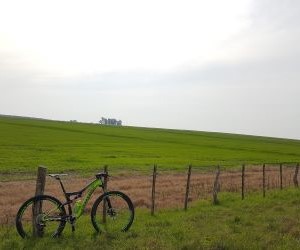Learn how to choose gravel bike geometry by comparing stability, comfort, and performance factors that match your riding style and terrain needs.
HOW DO I PRACTICE CORNERING ON A ROAD BIKE?
Cornering is one of the most critical yet overlooked skills in road cycling. Mastering it improves speed, safety, and efficiency. Many crashes occur in corners not because of bad equipment but because riders fail to understand body positioning, line choice, and braking. This guide provides structured drills, mental techniques, and advanced strategies to help cyclists practice cornering step by step, from basic handling to high-speed confidence on group rides and races.

Understanding cornering basics
Cornering on a road bike is about balance, traction, and line choice. Riders who grasp these principles reduce crash risk and carry more speed through turns with less energy cost. Unlike dirt cycling, road cornering requires trust in tires, smooth input, and awareness of road conditions.
Line selection
The safest and fastest path through a corner follows the “outside-inside-outside” approach. Enter from the outside edge, clip the apex smoothly, and exit wide. This maximizes radius and minimizes lean angle, preserving traction.
Body position
Keeping weight low and centered is key. Drop the outside pedal, press into it, and apply pressure on the inside handlebar. Look through the corner rather than at your front wheel. The bike leans more than your body, allowing traction to do its job without panic inputs.
Eyes lead the body: look where you want to go.
Relaxed grip avoids twitchy handling.
Commit to the lean for stability.
Trust tires and road contact.
Braking before corners
Hard braking mid-turn destabilizes the bike. Riders should finish braking before entering the corner, adjusting speed early. Feathering brakes gently while leaned is possible but should be limited to minor corrections. Practicing this timing builds confidence and flow.
Practical cornering drills
Cornering is not mastered in theory—it requires structured practice. Riders should gradually expose themselves to turns of increasing complexity, building muscle memory and reflexes in controlled environments before applying skills at speed.
Parking lot exercises
Empty parking lots provide safe spaces to practice turns without traffic. Riders can set up cones to simulate chicanes or sweeping arcs. Focus on smoothness, line choice, and braking points while gradually increasing lean angle.
Descending drills
Controlled descents on familiar roads sharpen real-world cornering. Begin at moderate speeds, applying the outside-inside-outside principle. Over time, increase speed while monitoring how tire grip feels under pressure. Practice alternating between left and right turns to ensure balance.
Mark braking points with landmarks.
Repeat the same corner multiple times.
Ride with a mentor for feedback.
Group cornering
Practicing in groups introduces drafting and proximity. Riders must anticipate others’ lines, hold predictable paths, and avoid over-braking. Learning to corner safely in packs is vital for racing and fast club rides.
Drills reduce hesitation. With enough repetition, correct technique becomes second nature, improving both speed and safety under pressure.
Advanced strategies for speed and safety
Beyond basics and drills, advanced strategies separate confident cornering from hesitant handling. These methods combine physics awareness, mental cues, and fine-tuned body mechanics for maximum control.
Managing traction limits
Every tire has a traction limit determined by speed, lean angle, and road surface. Pushing beyond it causes slides. Skilled riders sense when grip is near its threshold and adjust by easing off speed or reducing lean. Practicing at varied tire pressures teaches riders how grip feels under different scenarios.
Mental cues
Repeating phrases like “eyes up, smooth hands” during turns reinforces good habits under stress. Mental routines prevent panic reactions. Visualization before fast descents primes riders for smoother execution.
Anticipate road debris and gravel.
Adjust speed for wet or hot pavement.
Never overlap wheels in group cornering.
Confidence through repetition
The biggest barrier to cornering improvement is fear. Repetition under controlled conditions rewires instincts from stiff panic to fluid control. Confidence comes from dozens of successful turns, not theoretical knowledge. Riders who commit to consistent practice find that corners evolve from danger zones into opportunities for free speed.
By blending technical drills, mental training, and advanced strategies, cyclists can practice cornering safely and carry speed with authority on any road.
YOU MAY ALSO BE INTERESTED






